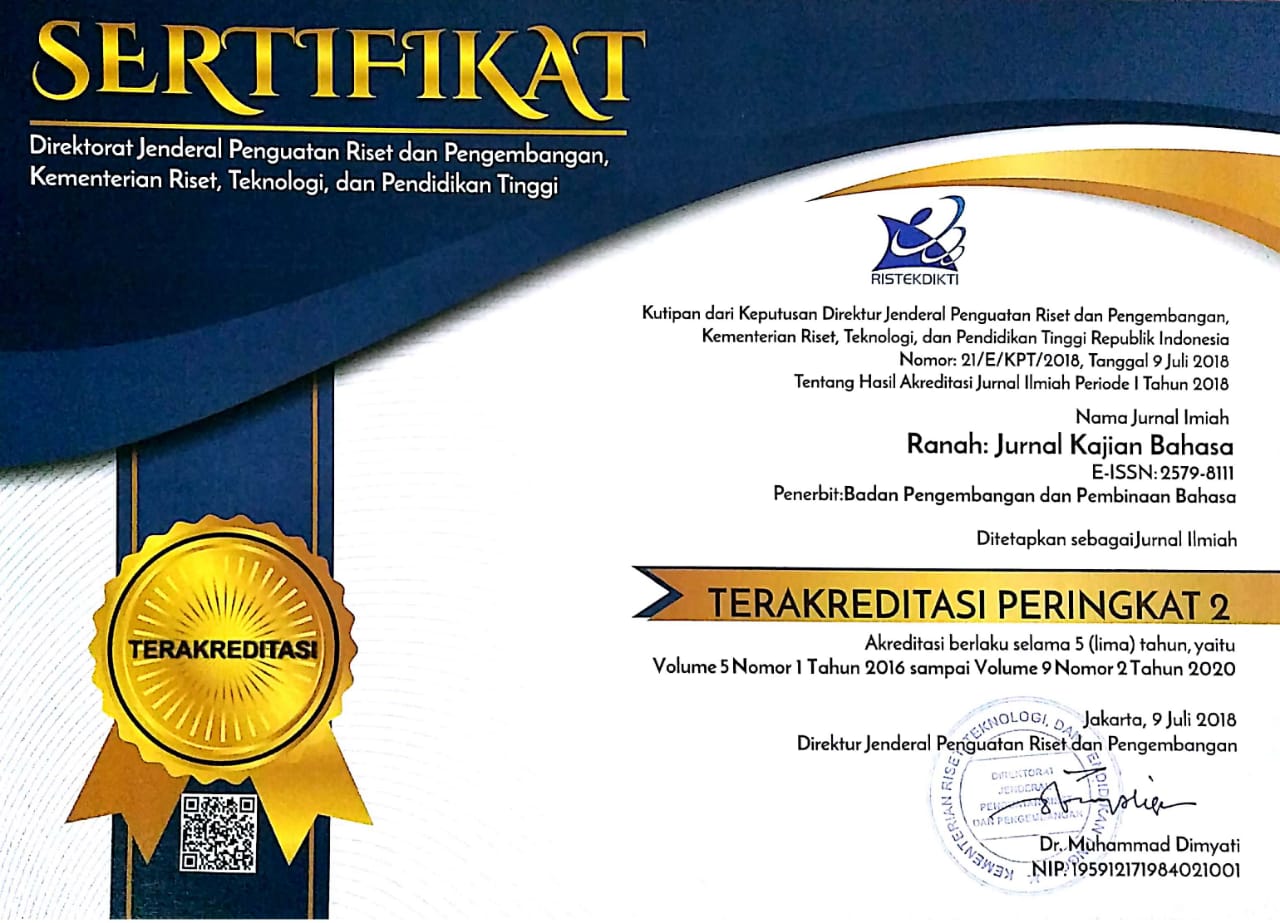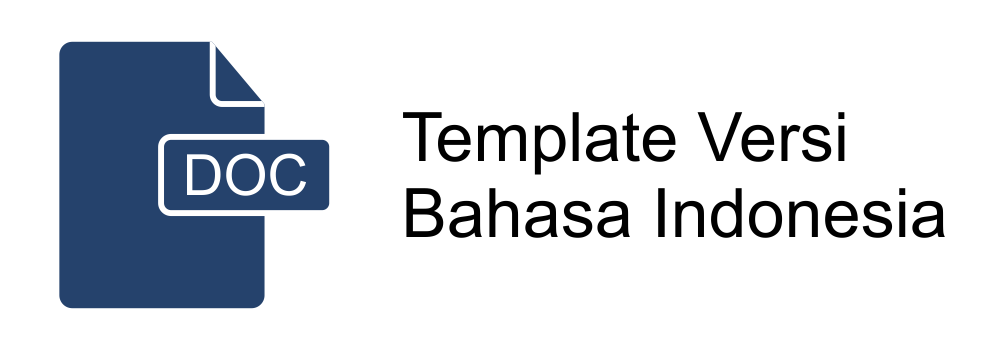GENDER BIAS AS REFLECTED ON UPIN & IPIN THE SERIES
Abstract
This paper describes gender bias as reflected in Upin & Ipin the series. This study employed qualitative research methods in which the objects were observed repeatedly to construct indicators that reflected gender bias. Then it was followed by analyzing them within sociological and feminist perspectives. It showed that there was an imbalance in gender position within several episodes of Upin & Ipin. As one of the media forms that later on becoming an instructional media, it should posit its position neutrally in the term of gender issues. The content of the gender bias in Upin & Ipin reflected within characters and settings. It reflected as the characters articulate their dialogues and behave in their daily life. There was a tendency to determine the ownership of boys and girls based on colors and things. In this case, pink regarded as to belong to girls. Also, there was a tendency to describe that girls and boys behave differently. For example, girls should be gentle and neat, and boys should be strong and brave. In the term of setting, gender bias reflected in the domination of areas that boys dominate outdoor public space while girls are in the domestic sector (households).
Abstrak: Artikel ini memaparkan hasil penelitian terhadap serial animasi Upin & Ipin yang memperlihatkan bias gender dalam beberapa episodenya. Sebagai salah satu bentuk media yang kemudian menjadi media pembelajaran seharusnya bisa berposisi netral dalam hal gender. Penelitian ini menggunakan metode penelitian kualitatif. Objek material diamati secara berulang untuk memperoleh indikator yang menunjukkan bias gender yang kemudian dianalisis dalam kerangka sosiologi dan perspektif feminisme. Hasil penelitian menunjukkan muatan bias gender dalam Upin & Ipin terdapat dalam tokoh dan penokohan serta pembentukan latar. Dalam tokoh dan penokohan serial animasi ini, melalui dialog dan lakuannya, terdapat kecenderungan “kepemilikkan” warna dan benda tertentu. Dalam hal ini, warna merah muda dianggap sebagai warna “milik” perempuan. Di samping itu, terdapat pula kecenderungan sifat dan perilaku perempuan dan laki-laki. Perempuan harus memiliki sifat lembut dan rapi sementara laki-laki harus keras dan berani. Dalam latar cerita, muatan bias gender muncul sebagai bentuk wilayah dominasi perempuan dan laki-laki. Perempuan dibatasi dalam wilayah domestik rumah tangga sementara laki-laki berada di wilayah luar (publik).
.
Keywords
Full Text:
PDFReferences
Abraham, A. (2016). Gender and creativity : an overview of psychological and neuroscientific literature. Brain Imaging and Behavior, 10, 609–618. https://doi.org/10.1007/s11682-015-9410-8
Aditama, R. W. (2018). Analisis Isi Kekerasan dalam Film Animasi Serial The Simpsons. Jurnal E-Komunikasi, 6(1), 1–9.
Almeida, A., del Barrio, C., Marques, M. M., Gutiérrez, H., and van der Meulen, K. (2001). A script-cartoon narrative of bullying in children and adolescents. In Prevention and Control of Aggression and the Impact on its Victims (hal. 161–168). Boston, MA: Springer US. https://doi.org/10.1007/978-1-4757-6238-9_19
Anggraeni, W. H. (2010). PESAN MORAL PADA FILM ANIMASI UPIN DAN IPIN (STUDI SEMIOTIKA PADA FILM LAYAR LEBAR ANIMASI UPIN DAN IPIN ” Geng Upin Dan Ipin Petualangan bermula”). Surabaya.
Arini, N. M. (2011). PEMAKAIAN BAHASA DALAM FILM KARTUN ANAK UPIN DAN IPIN : ANALISIS DIKSI. Surabaya.
Arlena, W. M., and Kurniasari, N. G. A. K. (2013a). Malays, China and Indian Ethnicities: A Case Study of Art and Ethnography Content Analysis and Multiculturalism on Upin-Ipin Animation. Jurnal Komunikasi ASPIKOM, 2(1), 629. https://doi.org/10.24329/aspikom.v2i1.41
Arlena, W. M., and Kurniasari, N. G. A. K. (2013b). Malays, China and Indian Ethnicities: A Case Study of Art and Ethnography Content Analysis and Multiculturalism on Upin-Ipin Animation. Jurnal ASPIKOM, 2(1), 629. https://doi.org/10.24329/aspikom.v2i1.41
Asmarany, A. I. (2007). Bias Gender Sebagai Prediktor Kekerasan Dalam Rumah Tangga. Jurnal Psikologi, 35(1), 1–20.
Astutiningsih, I. (2013). Laki-Laki “Cantik” di Mata Perempuan: Konstruksi Tubuh Superhero dalam Sastra Cyber. JENTERA: Jurnal Kajian Sastra, 2(2), 53–61. Diambil dari https://ojs.badanbahasa.kemdikbud.go.id/jurnal/index.php/jentera/article/view/408/200
Ausekle, D., and Šteinberga, L. (2011). ANIMATION AND EDUCATION: USING ANIMATION IN LITERATURE LESSONS. Pedagogy Studies / Pedagogika, (104), 109–114.
Basirudin. (2010). NILAI-NILAI MORAL DALAM FILM SERIAL KARTUN UPIN DAN IPIN. Purwokerto.
Bawono, G. A., and Haryanto, D. (2017). Pesan Moral dalam Serial Kartun Animasi Upin dan Ipin Episode “ Istimewa Hari Ibu .” Layar, 4(1), 33–46.
Blumberg, F. C., Bierwirth, K. P., and Schwartz, A. J. (2008). Does Cartoon Violence Beget Aggressive Behavior in Real Life? An Opposing View. Early Childhood Education Journal, 36(2), 101–104. https://doi.org/10.1007/s10643-008-0280-1
Burr, V. (2002). Gender and Social Psychology. New York: Routledge.
Chin, G. V. S. (2018). The Southeast Asian Woman Writes Back: Gender, Identity and Nation in the Literatures of Brunei Darussalam, Malaysia, Singapore, Indonesia and the Philippines. (G. V. S. Chin and K. M. Daud, Ed.). Singapore: Springer. Diambil dari http://ias.ubd.edu.
Culler, J. (1983). On Deconstruction. London: Routledge and Kegan Paul.
Darni, and Abida, F. I. N. (2017). Gender Bias in Elementary School Language Textbooks. International Journal of Gender and Women’s Studies, 5(1), 128–133. https://doi.org/10.15640/ijgws.v5n1p13
Daulay, H. (2007). Perempuan dalam Kemelut Gender. Medan: USU Press.
Eagly, A. H., Beall, A. E., and Sternberg, R. J. (2004). The Psychology of Gender. New York - London: The Guilford Press.
Eckert, P., and McConnell-Ginet, S. (2003). Language and Gender. Cambridge, New York, Melbourne, Madrid, Cape Town, Singapore, São Paulo Cambridge: Cambridge University Press.
Endraswara, S. (2003). Metode Penelitian Sastra: Epistemologi, Model, Teori, dan Aplikasi. Yogyakarta: FBS UNY.
Entwistle, J. (2004). From Catwalk to Catalog: Male Fashion Models, Masculinity, and Identity. In H. Thomas and J. Ahmed (Ed.), Cultural Bodies Ethnography and Theory. Victoria: Blackwell Publishing.
Ferrebe, A., Tolan, F., Andermahr, S., Naylor, A. K., Bates, C., Baker, B., … Ballaster, R. (2012). Teaching Gender. (A. Ferrebe and F. Tolan, Ed.), Teaching Gender. New York - Hampshire: PALGRAVE MACMILLAN.
Fine, C., and Rush, E. (2018). ‘“ Why Does all the Girls have to Buy Pink Stuff ?”’ The Ethics and Science of the Gendered Toy Marketing Debate. Journal of Business Ethics, 149(4), 769–784. https://doi.org/10.1007/s10551-016-3080-3
Gender and Child Development. (1994). International Conference on Population and Development. Washington DC: Pan America Health Organization.
Hardika, B. B. (2018). REPRESENTASI IDENTITAS ANAK DALAM ANIMASI UPIN DAN IPIN MUSIM 10 EPISODE 11. JOM Fisip, 5(1), 1–15.
Herawati, Y. (2017). ISU GENDER PADA NOVEL KARYA PENGARANG KALIMANTAN TIMUR: SOSIAL, BUDAYA, DAN SEJARAH. Kandai, 10(2), 258–270. https://doi.org/10.26499/JK.V10I2.329
Islam, K. M. M., and Asadullah, M. N. (2018). Gender stereotypes and education: A comparative content analysis of Malaysian, Indonesian, Pakistani and Bangladeshi school textbooks. PLoS ONE, 13(1). https://doi.org/e0190807
Juliswara, V. (2014). Pendekatan Simulakra Terhadap Kekerasan Dalam Film Kartun Tom and Jerry. Jurnal Ilmu Komunikasi, 12(2), 150–162.
Karima, S., and Christin, M. (2015). Analisis Semiotika Charles Sanders Peirce Atas Presentasi Kekerasan dalam Serial Film Kartun Little Krishna. In e-Proceeding of Management (Vol. 2, hal. 2237).
Kirsh, S. J. (2006). Cartoon violence and aggression in youth. Aggression and Violent Behavior, 11(6), 547–557.
https://doi.org/10.1016/J.AVB.2005.10.002
Lai, A., and Cooper, Y. (2016). Untangling Gender Divides Through Girly and Gendered Visual Culture. Journal of Social Theory in Art Education, 36(3).
Lavery, L. (2013). Gender Bias in the Media? An Examination of Local Television News Coverage of Male and Female House Candidates. Politics and Policy, 41(6), 877–910. https://doi.org/10.1111/polp.12051
Marecek, J., Kimmel, E. B., Crawford, M., and Hare-Mustin, R. T. (2003). Psychology of Women and Gender. In D. K. Freedheim and I. B. Weiner (Ed.), History of Psychology (Vol. 1, hal. 249). New Jersey: John Wiley and Sons Inc. https://doi.org/10.1002/0471264385
Marzuki. (n.d.). Kajian Awal Tentang Teori-Teori Gender. Yogyakarta.
Mustanzier, P. A. (2016). Penggunaan Gaya Bahasa Melayu dalam Tayangan Film Kartun Animasi Upin dan Ipin pada Perilaku Komunikasi Anak di Sd Negeri 1 Poasia Kendari. Jurnal Ilmu Komunikasi UHO, 1(2).
Nadzri, N. S. M., and Hassan, H. (2013). The Language Identities of Malaysians as Portrayed in Upin & Ipin. Jurnal Teknologi (Social Sciences), 65(2), 109–114.
Peters, K. M., and Blumberg, F. C. (2002). Cartoon Violence: Is It as Detrimental to Preschoolers as We Think? Early Childhood Education Journal, 29(3), 143–148. https://doi.org/10.1023/A:1014576307194
Pri’ambudi, A. (2011). Representasi Pembelajaran Budi Pekerti dan Toleransi dalam Film Animasi Upin & Ipin SEASON 1. Surakarta.
Purnomo, F. S. (2016). Analisis Nilai – Nilai Pendidikan Karakter Dalam Film Upin Dan Ipin Produksi Les Copaque Tahun 2010. DIKSA Jurnal Pendidikan Bahasa dan Sastra Indonesia, 2(2), 142–149.
Putri, Y. A. (2018). Analisis Semiotika Visual Animasi Upin & Ipin Episode “Ikhlas Dari Hati.” Padang.
Quinn, E. (2006). A Dictionary of Literary and Thematic Terms. (2nd, Ed.). New York: Facts On File.
Rahmad. (2015). Nilai Pendidikan Islam Film Animasi Upin dan Ipin dalam Membentuk Perilaku Islami Anak di Kelurahan Tinanggea. Shautut Tarbiyah, 33(November), 91–111.
Rahminawati, N. (2001). Isu Kesetaraan Laki-Laki dan Perempuan (Bias Gender). Mimbar, 17(3), 273–283. https://doi.org/10.29313/mimbar.v17i3.48
Rosita, E. (2017). Ketidakadilan Gender dalam Dwilogi Padang Bulan dan Cinta di dalam Gelas Karya Andrea Hirata: Kritik Sastra Feminis. Kandai, 11(1), 68–83. https://doi.org/10.26499/JK.V11I1.217
Sakina, A. I., and A, D. H. S. (2017). Menyoroti Budaya Patriarki Di Indonesia. Share : Social Work Journal, 7(1), 71. https://doi.org/10.24198/share.v7i1.13820
Saputro, M. E. (2011). Upin & Ipin: Melayu Islam, Politik Kultur, dan Dekomodifikasi New Media. Kontekstualita, 26(1). Diambil dari https://s3.amazonaws.com/
Selden, R. (1985). A Reader’s Guide to Contemporary Literary Theory. Sussex: The Harvester Press.
Sexton, M., Gervasoni, A., and Brandenburg, R. (2009). Australian primary mathematics classroom : APMC. Australian Primary Mathematics Classroom , 14(4). Diambil dari https://search.informit.com.au/
Sofia, A. S. (2003). Feminisme dan Sastra: Menguak Citra Perempuan dalam Layar Terkembang. Bandung: Katarsis.
Suryani, E. (2017). BATARI HYANG JANAPATI DALAM PERSPEKTIF GENDER. JENTERA: Jurnal Kajian Sastra, 6(2), 181–196. https://doi.org/10.26499/rnh.v6i2.177
Thompson, T. L., and Zerbinos, E. (1997). Television Cartoons: Do Children Notice It’s a Boy’s World? Sex Roles, 37(5/6), 415–432. https://doi.org/10.1023/A:1025657508010
Trier-Bieniek, A., and Leavy, P. (Ed.). (2014). Gender and Pop Culture. Rotterdam: Sense Publishers.
Ulya, C. (2016). Menakar Kualitas Struktur Dramatik Film Animasi Anak Adit dan Sopo Jarwo dalam Konteks Masyarakat Ekonomi Asean. In Konferensi Nasional Bahasa dan Sastra III (hal. 212–219). Surakarta: FKIP UNS. Diambil dari http://s3pbi.fkip.uns.ac.id/wp-content/uploads/2016/01/Chafit-Ulya.pdf
Untari, M. F. A., and Purnomo, F. U. (2016). KAJIAN NILAI MORAL DALAM FILM KARTUN UPIN DAN IPIN EDISI “IKHLAS DARI HATI” PRODUKSI LES’ COPAQUE. Malih Peddas, 6 (1), 9–18.
Zaduqisti, E. (2009). Stereotipe Peran Gender bagi Pendidikan Anak. Muwazah, 1(1).
DOI: https://doi.org/10.26499/jentera.v8i2.1642
Refbacks
- There are currently no refbacks.






















